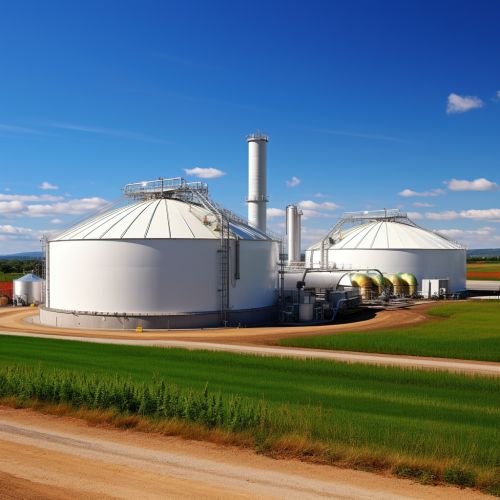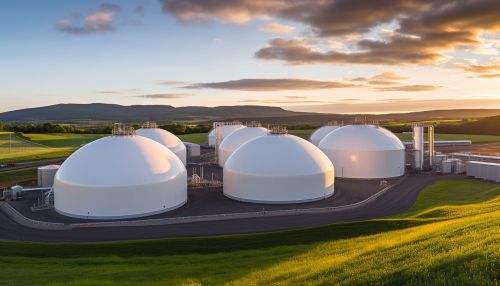Anaerobic Digestion for Renewable Energy Production
Introduction
Anaerobic digestion is a series of biological processes in which microorganisms break down biodegradable material in the absence of oxygen. It is used for industrial or domestic purposes to manage waste and/or to produce fuels. Moreover, it is an eco-friendly, carbon-neutral technology that can help reduce the usage of fossil fuels, thus contributing to the mitigation of global warming effects.
Process
The process of anaerobic digestion involves four key steps: hydrolysis, acidogenesis, acetogenesis, and methanogenesis. Each step involves different types of bacteria that work in synergy to degrade organic matter and produce biogas.


Hydrolysis
In hydrolysis, bacteria break down complex organic materials into simpler soluble compounds such as sugars, amino acids, and fatty acids. This is the first step in the anaerobic digestion process and is crucial for the subsequent steps.
Acidogenesis
During acidogenesis, the products of hydrolysis are further broken down into volatile fatty acids and alcohols. This step also produces ammonia, carbon dioxide, and hydrogen sulfide.
Acetogenesis
In the third step, acetogenesis, the products from acidogenesis are converted into acetic acid, carbon dioxide, and hydrogen.
Methanogenesis
The final step, methanogenesis, involves the conversion of the products from acetogenesis into methane and carbon dioxide. This step is carried out by methanogens, a group of archaea, which are a type of prokaryotic microorganisms.
Biogas Production
Biogas, a byproduct of anaerobic digestion, is a mixture of methane, carbon dioxide, and trace amounts of other gases. Methane, the main component of biogas, is a potent greenhouse gas if released into the atmosphere. However, when captured and used as a fuel, it can provide a renewable source of energy, reducing reliance on fossil fuels.
Applications
Anaerobic digestion has a wide range of applications, from waste management to renewable energy production.
Waste Management
Anaerobic digestion is an effective method for treating organic waste, including municipal solid waste, food waste, and agricultural waste. It reduces the volume of waste and produces a nutrient-rich digestate that can be used as a soil conditioner.
Renewable Energy Production
Biogas produced from anaerobic digestion can be used directly for heating, or it can be converted into electricity and heat using a combined heat and power (CHP) unit. It can also be upgraded to biomethane, a renewable natural gas, through a process called biogas upgrading.
Advantages and Disadvantages
Like any other technology, anaerobic digestion has its advantages and disadvantages.
Advantages
Anaerobic digestion offers several benefits, including waste reduction, nutrient recycling, and renewable energy production. It also helps in reducing greenhouse gas emissions and can contribute to energy security.
Disadvantages
However, there are also some challenges associated with anaerobic digestion. These include the high initial investment cost, the need for skilled operation and maintenance, and the potential for odor and pathogen issues.
Conclusion
Anaerobic digestion is a promising technology for waste management and renewable energy production. Despite its challenges, with proper management and technological advancements, it can play a significant role in a sustainable and circular economy.
